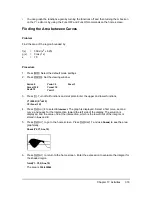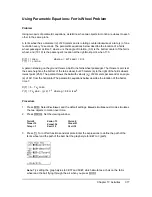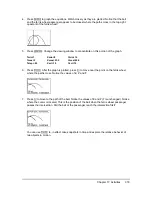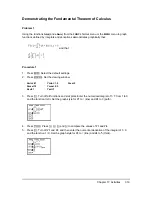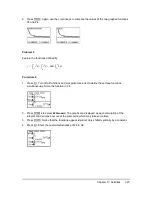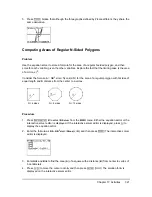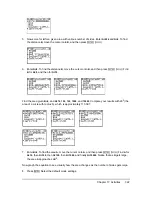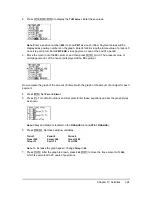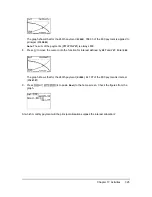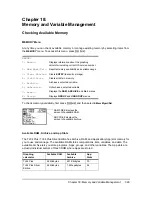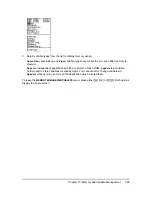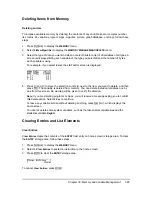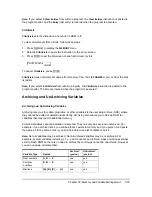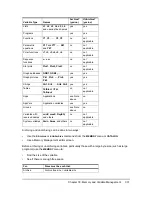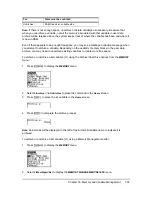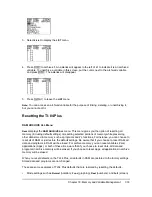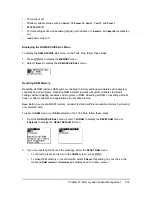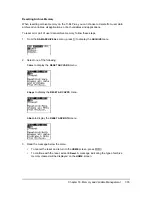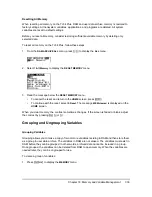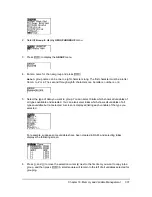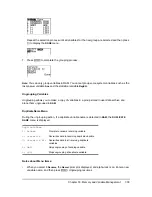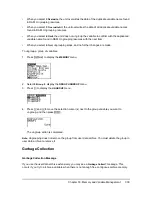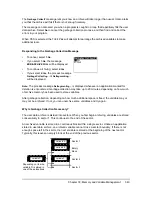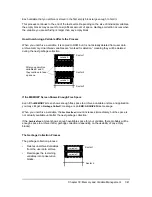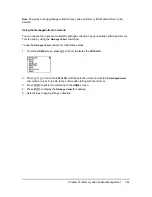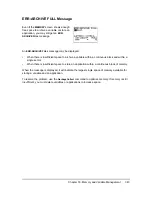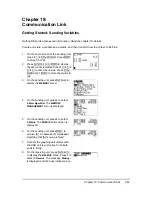
Chapter 18: Memory and Variable Management
330
Note:
If you select
3:Clear Entries
from within a program, the
Clear Entries
instruction is pasted to
the program editor, and the
Entry
(last entry) is cleared when the program is executed.
ClrAllLists
ClrAllLists
sets the dimension of each list in RAM to
0
.
To clear all elements from all lists, follow these steps.
1. Press
y L
to display the
MEMORY
menu.
2. Select
4:ClrAllLists
to paste the instruction to the home screen.
3. Press
Í
to set the dimension of each list in memory to
0
.
To cancel
ClrAllLists
, press
‘
.
ClrAllLists
does not delete list names from memory, from the
LIST NAMES
menu, or from the stat
list editor.
Note:
If you select
4:ClrAllLists
from within a program, the
ClrAllLists
instruction is pasted to the
program editor. The lists are cleared when the program is executed.
Archiving and UnArchiving Variables
Archiving and UnArchiving Variables
Archiving lets you store data, programs, or other variables to the user data archive (ARC) where
they cannot be edited or deleted inadvertently. Archiving also allows you to free up RAM for
variables that may require additional memory.
Archived variables cannot be edited or executed. They can only be seen and unarchived. For
example, if you archive list
L1
, you will see that
L1
exists in memory but if you select it and paste
the name
L1
to the home screen, you won’t be able to see its contents or edit it.
Note:
Not all variables may be archived. Not all archived variables may be unarchived. For
example, system variables including r, t, x, y, and
q
cannot be archived. Apps and Groups always
exist in Flash ROM so there is no need to archive them. Groups cannot be unarchived. However,
you can ungroup or delete them.
Variable Type
Names
Archive?
(yes/no)
UnArchive?
(yes/no)
Real numbers
A
,
B
,
...
,
Z
yes
yes
Complex
numbers
A
,
B
,
...
,
Z
yes
yes
Matrices
[A], [B], [C], ... , [J]
yes
yes

